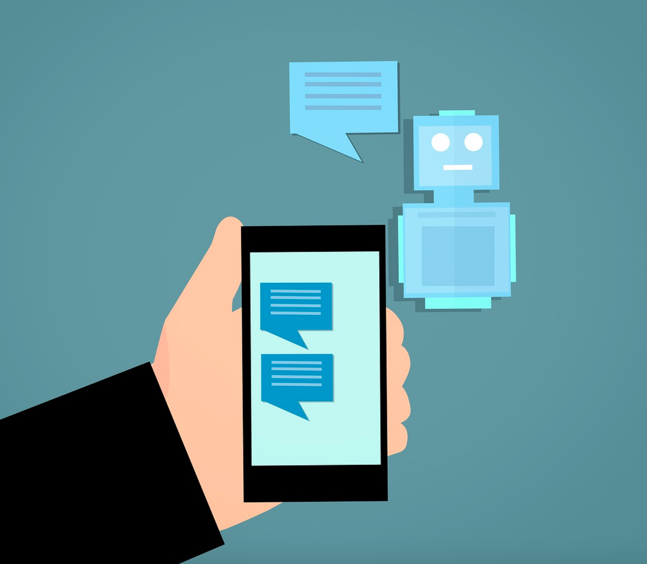Why Automated text/voice Chatbots are a Substantial Addition to Any Company’s Marketing Strategy
Akshay Sura - Partner
8 Dec 2020
With the emergence of artificial intelligence (AI), chatbots have become popular with companies looking to automate their interactions with their customers and increase business growth. These little robots are entirely AI-powered and simulate natural human conversation through text or voice commands. Although they aren’t on the company payroll, they are quite efficient and bring great assistance to their human colleagues.
Because of their versatile nature, the market is growing exponentially and shows no signs of stopping. Facebook has reported that a customer is 50% more likely to buy from a brand after interacting with the company - even if that interaction was done with a chatbot.
As AI evolves, chatbots are getting better at comprehending language. The more conversation they are exposed to, the more their knowledge will increase, and they will be better positioned to provide users with a rewarding customer experience.
To stay competitive, companies need to start embracing AI technology, even if the whole concept seems foreign and straight out of Blade Runner. Let us look at a few reasons why chatbots should be integrated into a digital marketing strategy and how their presence can help companies grow their brand.
What is a chatbot and how they help in your company’s marketing strategy?
A chatbot is an online messaging tool that interacts with website users. A chatbot can be programmed to answer specific questions and interact conversationally.
Unlike employees, chatbots don’t need sleep nor breaks; they are on call 24/7 and ready to assist customers through interactive conversations. The internet age has made everyone rethink the way business is conducted. No one likes to wait for solutions - everything needs to be delivered instantly. Companies that rely solely on business hours to communicate with customers are alienating many internet users who often research during off-hours. Giving customers what they want and when they want is essential in satisfying them and ensuring they return.
They Provide a Smooth Customer Journey
Online competition is fierce, and customers know their attention is vied for. Losing customers somewhere along the sales funnel is all too common, and it doesn’t take much for them to abandon their cart quickly. Chatbots can promptly assist or provide additional information to help keep customers on the website to complete a specific action.
Programming chatbots to perform different roles such as providing technical or sales support, providing company details, or placing orders means that customers can bypass the frustration and time-consuming task of trying to get someone on the phone. Not only can bots be programmed to perform certain functions, but they can also develop their own personality, making them a good fit for any customer-facing role.
They are Cost-Effective in Many Ways
Apps are expensive and require a solid understanding of coding and development, which costs both time and money. In comparison, chatbots are relatively easy to implement and less costly.
Chatbots can easily multi-task and handle numerous client requests simultaneously. This frees up precious human resources to handle more complex questions as opposed to performing basic repetitive tasks. Efficient and speedy chatbots provide fast customer service, which is an excellent starting point in acquiring and retaining clients.
They Collect Relevant Data
Data collection is the holy grail for marketers and businesses in general, and chatbots play a big role in obtaining this information to further enhance the user experience by asking the right questions. Once a chatbot has solved a problem, it can collect feedback by asking users if they would be interested in learning more about a similar topic and then use this data appropriately in the future. Apparel stores can learn which brand or colour is more popular; SaaS companies can evaluate if their webinar topics resonate with their clients’ needs.
Tips to Remember
When it comes to employing chatbots to attract clients, good working strategies need to be implemented to ensure maximum ROI. The purpose of chatbots is to delight and engage customers while helping them achieve what they set out to do.
Define Goals to Build a Solid Strategy
The end goal for using these chatbots needs to be strategic and determined ahead of time. What are the company’s end goals, and what value will this bot bring to customers who interact with it?
What can the chatbot offer the user to have them take action? Provide a quote? Offer a discount code? Track a delivery? Without a goal in mind, the chatbot becomes unhelpful and counterproductive; worse, they are seen as annoying and spammy. A solid goal will ensure that the little chatbots delight.

Make Sure to Have Human Resources Available for Escalation
A chatbot acts as a company helper; it does not replace customer service representatives. If a shipping order destined for Melbourne, Florida somehow finds its way in Melbourne, Australia, a chatbot will have a hard time explaining the why, what, and how of the situation.
Some chatbots are more sophisticated than others and will have a better understanding of what is being expected of them, but as a general rule, complex and specific questions still require human intervention. Chatbots should be seen as a company’s virtual host, ready to greet clients, provide them with helpful suggestions, and answer simple surface-level questions.
Measure Results
There are many ways to judge if a chatbot is working for or against a company. Running an A/B split test where companies compare conversion rates from a specific period before and after the chatbot implementation is one way to track success.
Were people more likely to convert after interaction with the chatbot? Did users follow the suggestions provided by the chatbot? Were queries answered satisfactorily? Seeing how users responded towards their interaction with a chatbot is a solid way to determine the efficiency and usefulness of a chatbot.
Conclusion
It’s simple to dismiss chatbots as annoying or impersonal, but the reality is that AI will become increasingly better at detecting human speech and intentions. There is still work to be done, but simply watching the rise of AI-powered devices such as Siri or Alexa clearly signals a trend in people’s desire to incorporate them into their lives. Every industry is heading in that direction - and digital marketing is no exception - so companies need to start embracing these new technologies. Since automated chatbots are still in the early stages, companies should embrace this time to try new things to see what works and what doesn’t - this will put them ahead of their competitors when they finally implement their own chatbots.
Follow us on Twitter Follow us on LinkedIn Follow us on YouTube

Akshay Sura
Akshay is a nine-time Sitecore MVP and a two-time Kontent.ai. In addition to his work as a solution architect, Akshay is also one of the founders of SUGCON North America 2015, SUGCON India 2018 & 2019, Unofficial Sitecore Training, and Sitecore Slack.
Akshay founded and continues to run the Sitecore Hackathon. As one of the founding partners of Konabos Consulting, Akshay will continue to work with clients to lead projects and mentor their existing teams.



Share on social media